Water dripping problem was occurring at a food court/ restaurant in one of luxurious mall in Kolkata. It was running from morning to late evening. As per requirement of Customer, we had done inspection at midnight. Watch the video to know our observation and solution to their problem.
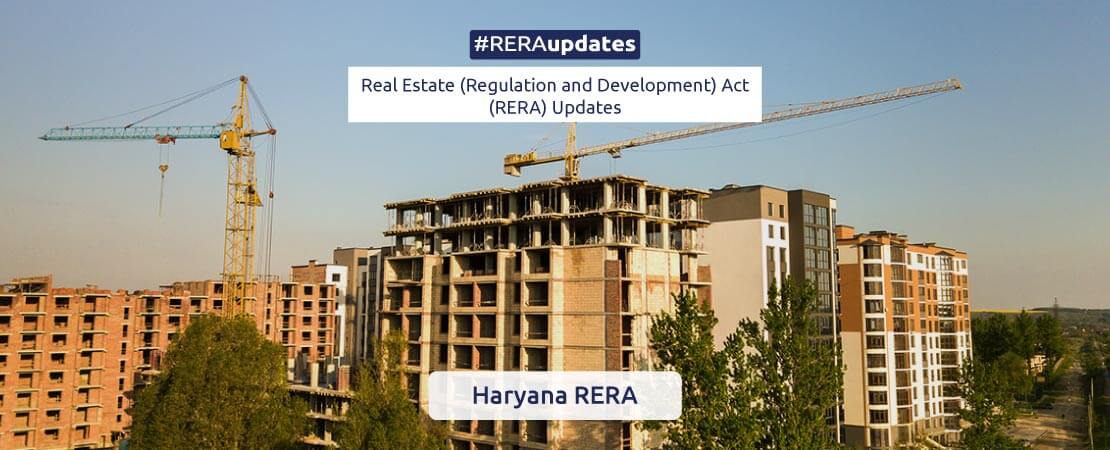
No new projects if old ones pending: Haryana-Rera
The Gurugram bench of Haryana Rera on Friday issued a notice to blacklist and debar a real estate company, Empire Realtech, and its promoter CHD Developers from launching any new project till ongoing ones are completed. It’s the first time the regulator has taken such a tough measure as delays in delivery of homes have turned into a chronic problem both in the city and other parts of NCR’s struggling but massive real estate sector.
CHD Developers had launched a housing project under Empire Realtech in 2011 – 106, Golf Avenue in Sector 106 – with a promise to offer possession by December 2016. The homes have, however, not been delivered yet. The promoter intimated the revised date for completion to H-Rera as June 30, 2021 at the time of registration in 2016. “But keeping in view the present situation of funds and stage of construction, there is every likelihood of further delay of the project,” observed the bench comprising chairman KK Khandelwal and members SC Kush and Samir Kumar while deciding to issue a notice asking why the company should not be blacklisted and debarred from launching new projects till it completes existing ones.
“The quarterly progress reports have not been submitted by the developers (as required under Rera rules) either,” Khandelwal said. The notice asks why penal proceedings should not be initiated and a penalty that may be up to 5% (Rs 28 crore) of the project cost should not be imposed. “The promoter has been asked to submit a mitigation plan for completion of the project within a month in consultation with the association of allottees. The authority has also given an option to the association of allottees on taking over the project for its completion,” Khandelwal added.
There are 642 units in the project, of which 600 have been sold. Nearly Rs 500 crore has been collected from homebuyers. The promoter has also taken a loan of Rs 150 crore, of which Rs 36 crore is outstanding. The bench said since the promoter had not opened a separate Rera account for the project, instalments paid by homebuyers were received in the bank’s escrow account, and the money deposited in the account was taken away by the lender against the loan. Consequently, there were no funds left for construction.

Why Ventilation is important for your home?
- Why ventilation is important for your home?
1. Helps in controlling moisture
2. Health of you and your family
3. Improves Air Quality
4. Increases Comfort level
5. Better Air Regulation
6. Reduces Temperature - Some Considerations for good ventilation
- Ventilation tips for better indoor Air
Ventilation is essential for home comfort. Proper ventilation prevents air pollutants from affecting the health of family and home. Without proper ventilation, a home or building can become a house of static air, where bacteria and carbon build-up, making the indoor air unsafe for the inhabitants. Like we do breathing exercises to have good health, similarly, buildings too need to breathe well.
In general terms, Ventilation is a process of replacing still & stagnant air with fresh air. A well-ventilated house is one that ensures sufficient air and sunlight infiltration into the house.
Read the content to understand: Why ventilation is important for your home?
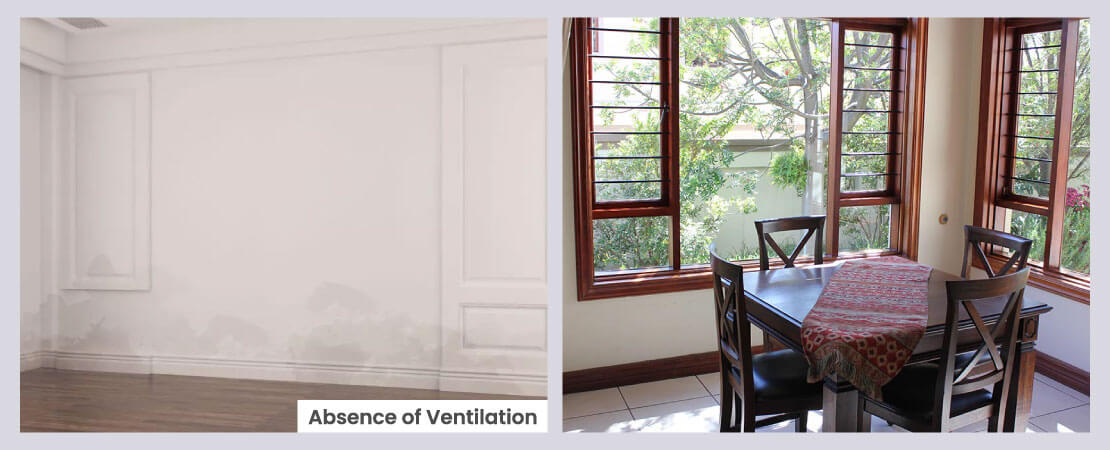
1. Helps in controlling moisture
Ventilation is very important because it controls how much moisture is persisting in the home. If one has adequate airflow throughout home; walls, floors, and all the wood in the home will stay dry and not collect moisture. Wood can decay when exposed to moisture. If one lets moisture build up in these areas of the home, they will not only destroy the structural integrity, but they will also cause mold/ termite buildup or other moisture-related problem.

2. Health of you and your family
Proper ventilation protects you & your family from unpleasant odours and irritating pollutants. Poor Ventilation increase the risk of airborne diseases, causes allergies, nausea and can also leads to serious health issues like eczema, nervous system damage, and cancer. It causes sick building syndrome. Ventilation prevents the growth of fungus and molds in your home and hence keeps you protected from allergies and breathing issues. To know and understand the health effects, read Poor Ventilation and the health consequences that come with it1.
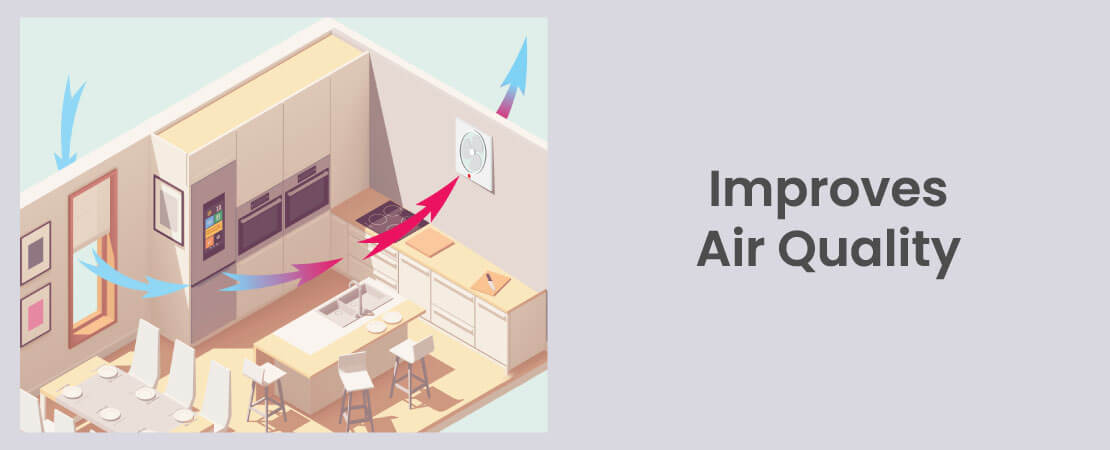
3. Improves Air Quality
If the air inside the house does not move outside, the pollutants such as chemical gases and germs would affect the air quality and cause harm. Ventilation helps expel the pollutants stored inside along with the bacteria, moisture and odour. It controls indoor humidity and airborne contaminants, both of which either contribute to or act as health hazards. Also, it helps in removing volatile organic compounds in house paint, air fresheners, cleaning products. Hence, proper ventilation helps in improving indoor air quality and ensure a healthy living.
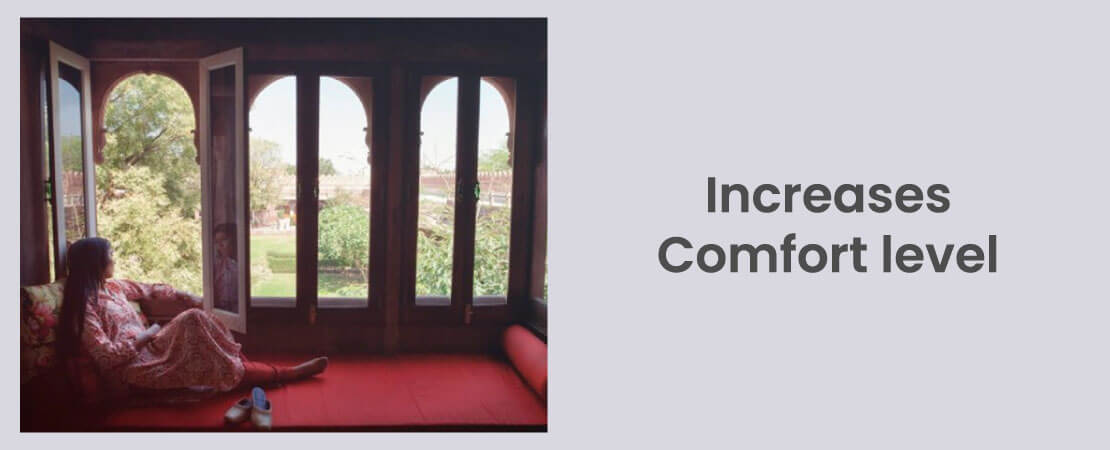
4. Increases Comfort level
Ventilation controls the humidity level and allows you to breathe easier. When the room is filled with fresh & clean air, the airborne contaminants are eliminated. Moreover, sufficient inflow of air cools the room in the best way and this makes indoor ambiance better. All these add to the increase in the comfort level.
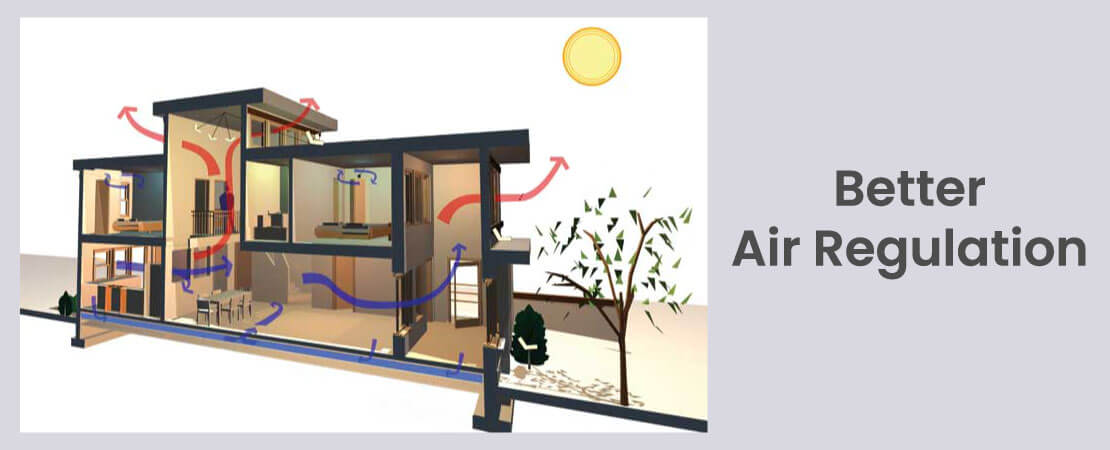
5. Better Air Regulation
A well-ventilated home has lower energy bills, and this is the reason why people prefer to live in a place that provides natural ventilation. It lowers the home’s humidity reduces the pressure on the air conditioner and also extends its life span.

6. Reduce Temperature
Sometimes when lot of people live in a small home, space becomes hot making the environment unbearable. A proper ventilation system reduces the temperature and makes a home comfortable and relaxed for everyone.
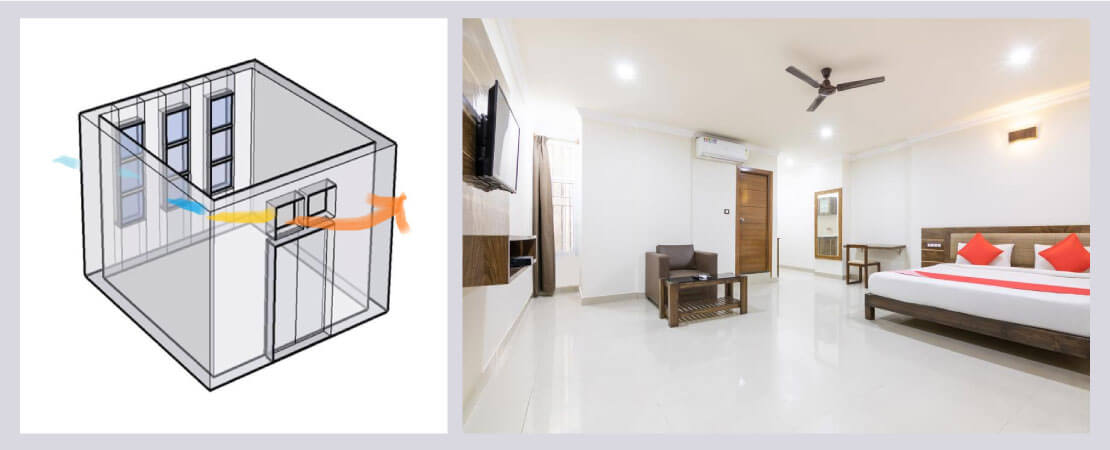
Some Considerations for good ventilation
In order to achieve good natural ventilation in a home, below considerations can be followed:
- Outlet openings should be just opposite to inlets to ensure better cross-ventilation.
- More height of the room gives better ventilation.
- Inlet openings should be located on the windward side and at low level so that all parts of the room are uniformly ventilated2. Outlet opening should be located on lee ward side(side facing away from the wind) near the ceiling in the side walls. It is nowadays less common in homes.
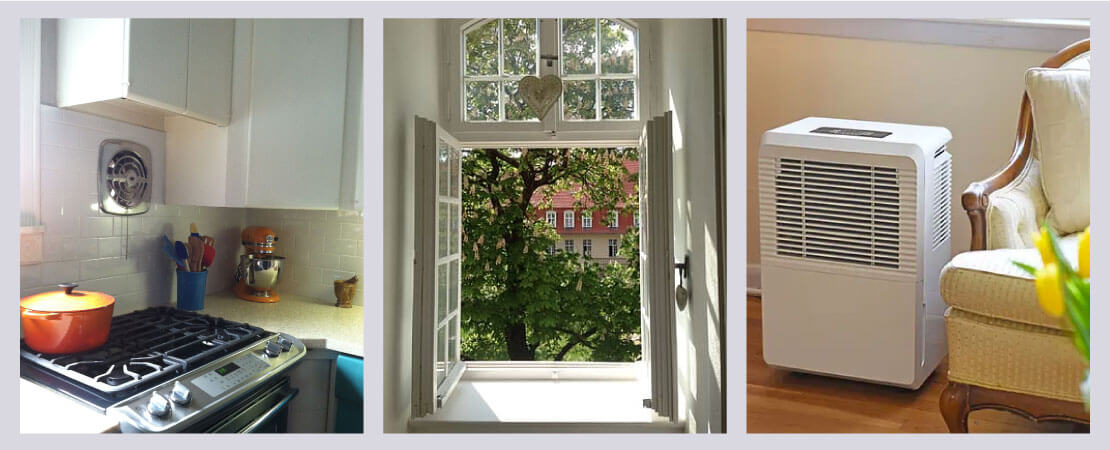
Ventilation tips for better Indoor Air
- Use of exhaust fans: Exhaust fans draw air from a particular location and vent it to the outside. Both Kitchens and bathrooms should have an exhaust fan. Bathroom and kitchen fans are a significant part of your home’s ventilation system. They remove odours from your house, which improves indoor air quality. They also remove moisture, which decreases the level of humidity in your house.
- Natural ventilation: Most common method of natural ventilation3 is opening windows and doors. When outdoor air is cooler and drier than your indoor air, by all means, open the windows and let that fresh air flow through.
- Clean air: If exhaust fans and natural ventilation cannot serve the purpose, you can opt for a dehumidifier to reduce the humidity in your home.
Final Words
Improper ventilation in homes can lead to illnesses and discomfort as well as cause damage due to poor moisture & temperature control.
Whether you are living in a home, fresh air is essential to survive. If you are searching for a new home to move in, check if it has good ventilation. It is very essential for health, efficiency and hygienic conditions. Hence while planning your home it should be ensured that each area/ room is properly ventilated.
Proper home ventilation is essential for the health of the residents and the structure. It controls the build-up of indoor air pollutants and moisture. Therefore, it is utmost important to keep the house adequately ventilated.
Get a proper check up of your home
As Home is one of the biggest investment of your life. It is important to maintain the health and safety of your home for you & your family. So, it is better to get proper check up of your home same as our body. For this problem, Home inspection is the best solution.

Ladakh notifies RERA rules, ushers in new era in real estate development in UT
Ladakh has become the 34th union territory to have notified the rules under the Real Estate (Regulation and Development) Act leading the way for property development to take place in the region.
“Extremely happy to share that Ladakh becomes the 34th State/UT, which has notified Rules under RERA. It was done on 8 October 2020. It paves the way for implementation of this transformative legislation in the Union Territory, opening new vistas of real estate development journey,” secretary, ministry of housing and urban affairs, Durga Shanker Mishra tweeted.
In August, the union territory of Jammu and Kashmir had notified the rules under RERA becoming the 33rd state/union territory to do the same.
“The move will open up new vistas for the development of the union territory J & K by ensuring efficient & transparent transactions. It will also ensure timely delivery & quality construction of real estate projects,” Mishra had tweeted then.
According to statistics provided by the MoHUA more than 52,000 real estate projects and 40,517 real estate agents have registered under RERA across the country. Nearly 50,000 complaints have been disposed-off by the Real Estate Regulatory Authorities across the country.
Out of this, nearly 57 percent cases or approximately 27,581 complaints were resolved in the last one year alone.
Uttar Pradesh takes the lead with as many as 18,509 cases disposed off by the UP RERA authorities so far, against a mere 5,989 cases a year ago.
Haryana is at a distant second with nearly 9,919 cases disposed of currently as against 3,123 cases in the corresponding period of 2019. Maharashtra’s MahaRERA has so far disposed of nearly 7,883 cases, an analysis by Anarock property consultants has said.
Project registrations have seen a 24 percent annual jump – from 43,208 projects as on July-end 2019 to nearly 53,364 projects presently, the analysis said.
The states with maximum project registrations currently include Maharashtra, Gujarat, Karnataka, Madhya Pradesh, Uttar Pradesh, Telangana and Tamil Nadu.
Following the coronavirus pandemic over 23 states RERA Authorities have so far extended registration of projects by six months and one by nine months following the situation created by the coronavirus pandemic and this has been done to safeguard the interests of homebuyers.
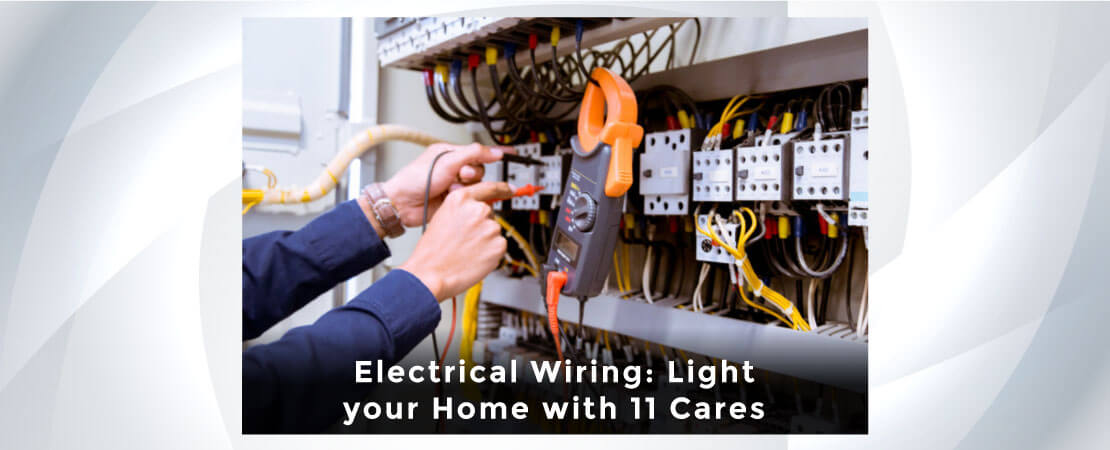
Electrical Wiring: Light your Home with 11 Cares
1. Skilled Electrician
2. Use ISI marked Wires & Accessories
3. Proper Wire Gauge
4. Fix Switchboards at proper height
5. Never use damaged wiring
6. Wires within an electrical box
7. Importance of RCCB
8. Ensure Earthing Connection
9. Electrical layout
10. Different Circuits
11. Proper dressing of Wire and Wire Code
With so much dependence on our electrical appliances and electronics, we are bound to get frustrated and worried when the electric power in our home is cut off or other related problems.
Electrical faults are common in each and every house that may be unsafe for residents. When it is about your home you must be aware of the electrical mistakes and their effects. Because when you start living in your home and experience electric faults it may create hassles in your life.
For a homeowner, it is important that you should know about the things to be taken care of during house wiring to avoid any challenges in the future. When your electrician is doing electrical installations as part of the remodelling project of your house or during the construction of the house, you should have some amount of knowledge about the house wiring.
In case of defects in electrical wires, they can cause hazards in the house and may even take human life in some cases. So make sure you do the following to ensure good electric works for safety at home:
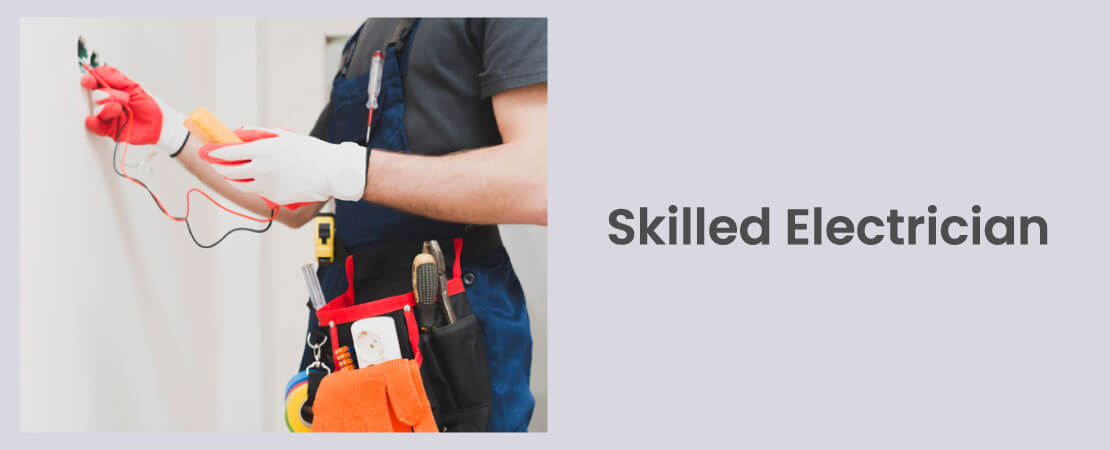
1. Skilled Electrician
Always ensure to hire a professional or a good electrician for all electric works including wiring of your home.

2. Use ISI marked Wires & Accessories
All materials to be used in electrical fittings should be of approved standards and from a reputed manufacturer as per ISI specifications. Non ISI marked wires could have less longevity, are less safer and non-eco-friendly as compared to ISI marked wire. Never use low-quality materials as it may cause serious accidents.
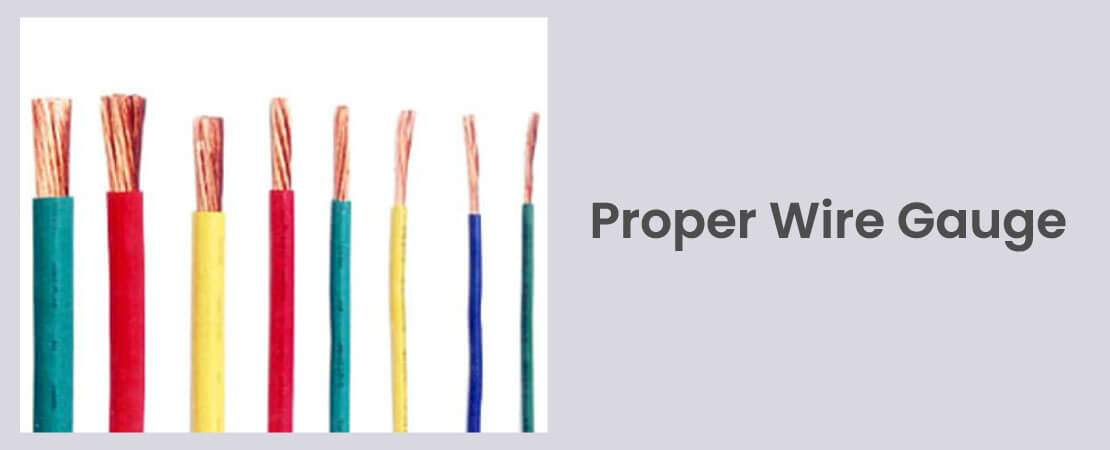
3. Proper Wire Gauge
Many times it is seen that electricians are careless while using right load bearing wires for wiring purpose and these wires get burnt when the entire load is put on wires. So, make sure that the wires being used for wiring are capable of taking the desired load. For that, electrician must calculate the total load from various items that would be used in the house. As per standards, it is advisable that the wiring gauge used for phase, neutral & earthing connection must be the same.
4. Fix Switchboards at proper height
Switchboards should be installed at a height that can be easily accessed by residents except by children. Standard height of board with installation are:
| a. | TV socket height | 1200 mm to 1500 mm |
| b. | Lighting switchboard height | 1000 mm to 1200 mm |
| c. | Geyser socket height | 1900 mm minimum |
| d. | AC socket height | 2100 mm minimum |
All heights are from Finished Floor Level. These heights can be changed as per requirement of residents e.g., in case there is physically disabled person or senior citizen.
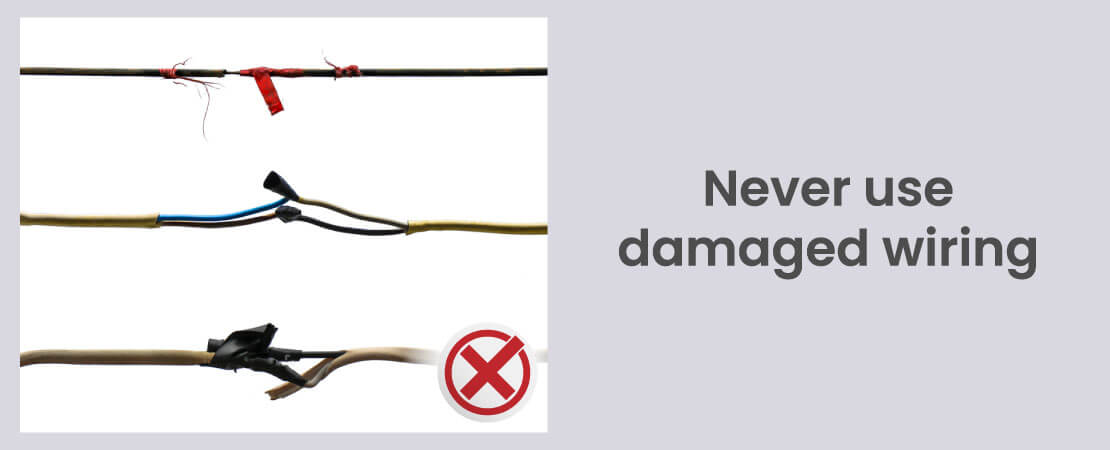
5. Never use damaged wiring
Broken/ cut wiring, loose connection, burnt element and rusted points should never be used to avoid electrical fault. Never make use of damaged insulation wiring to avoid short circuit fault. Damaged and loose connection should not be done in any appliance to avoid earthing fault.
6. Wires within an electrical box
Wires within an electrical box should be away from the edges to avoid being damaged while nailing.
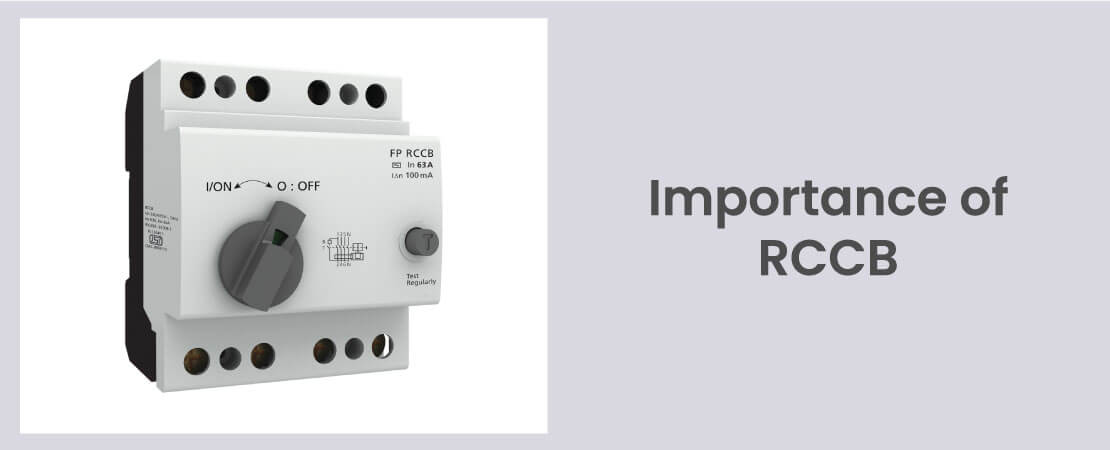
7. Importance of RCCB
While electricity has become an important component of everyone’s lives, the fact of the matter is, it comes with its dangers to human life as well as equipment. Electrocution and fire are the two significant risks correlated with electricity, one simply cannot be careless when it comes to safeguarding equipment.
A Residual Current Circuit Breaker1 (RCCB) is a safety device that provides protection even from a small leakage current generated by human touch or insulation failure of wire, also can be referred a Minimal shock protection device. Read to know: Why RCCB is a must?
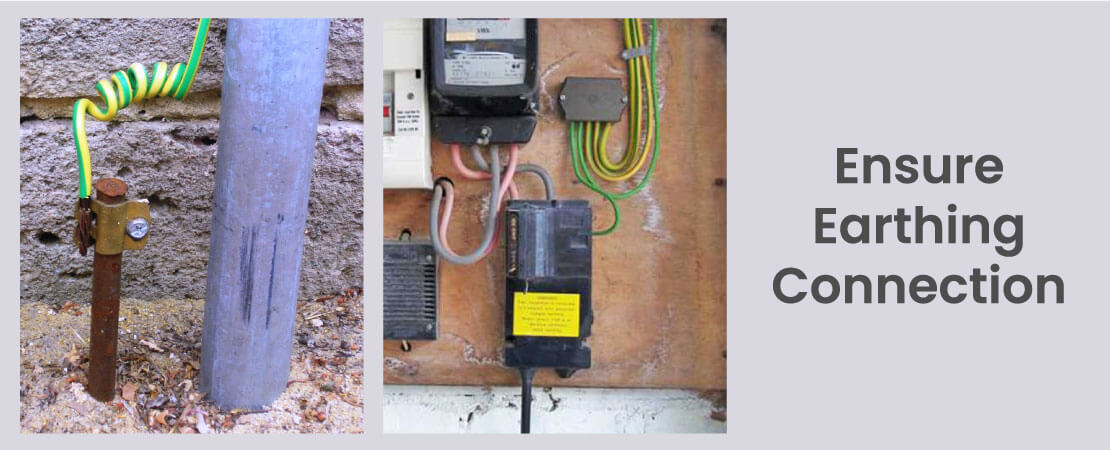
8. Ensure Earthing Connection
It is important to provide proper earthing to the wiring as it saves human life from the danger of electric shock or death. There are two earthing – Ground earthing and earthing by electrical supply. So make sure both earthing is provided.
And it is also important to provide earthing at electrical outlets for High wattage appliances like geyser, AC etc Provide earthing to enhance voltage and protect human beings from sudden electric shock.
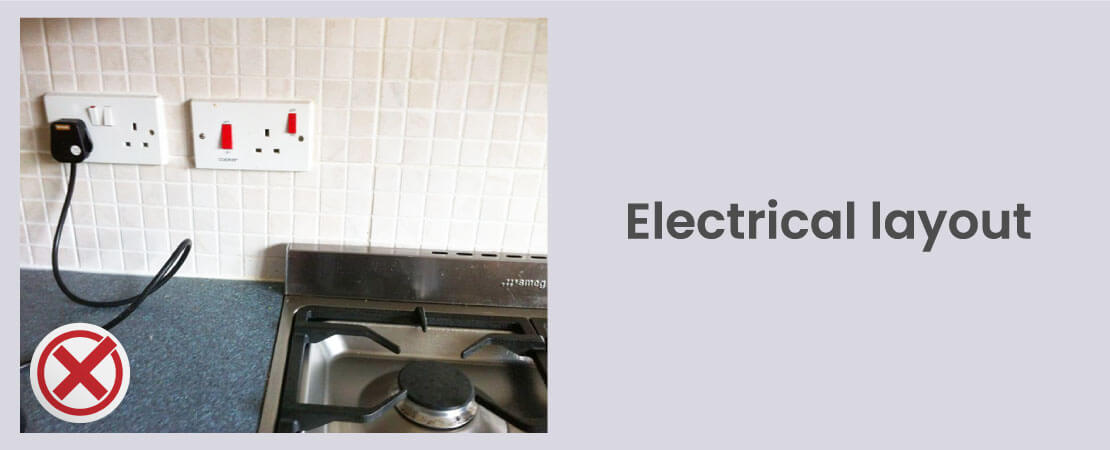
9. Electrical layout
It is important to follow the electrical layout for location and height at which provision to be given for fitting/ installation. But electrician has to wisely see if there is a safety concern involved, in that case, specification can be changed. To understand more, read Switchboard near gas stove – safety hazard.
10. Different Circuits
The power circuit and lighting circuit should be different. This will be helpful for convenience in repair or maintenance during a fault in a power circuit or vice versa.
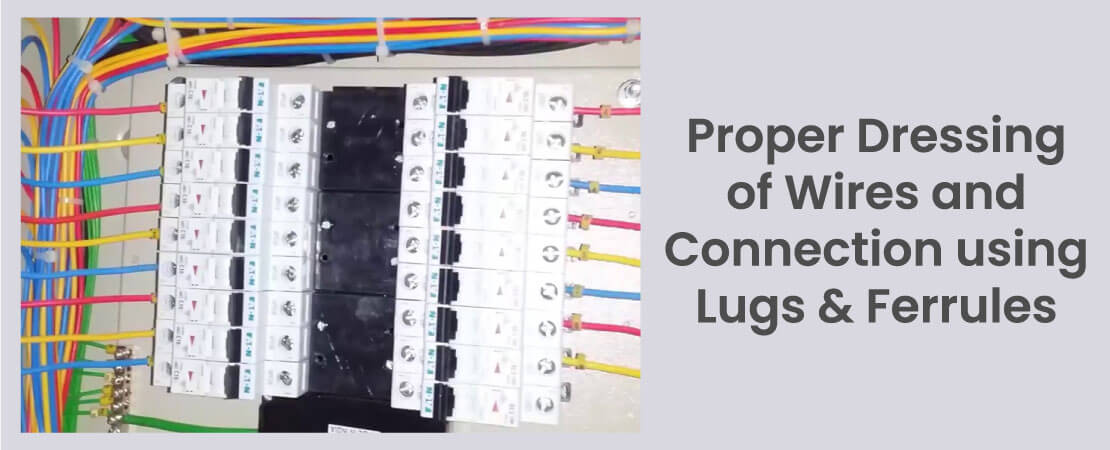
11. Proper Dressing of Wire and Wire Code
Improper dressing of wire can lead to overheating & current loss. It can also create inconvenience during repair or maintenance. Wire colour code is important for identifying the phase, earthing and neutral connection. It provides safety2 and ease during repair & maintenance. Also, ensure proper wire joints for longevity.
Conclusion
Electricity has made our lives more comfortable and easy in so many ways – but that does not mean it comes without its risks. Electrical wires are the basic unit of every electrical system. Most of the electrical failures are caused due to failure of electrical wires. People often ignore their significance. Our objective behind writing this content was to make you aware of things to be taken care of during home electrical wiring. And if you are facing any problem with your home electrical system, then contact professionals to ensure safety at home.
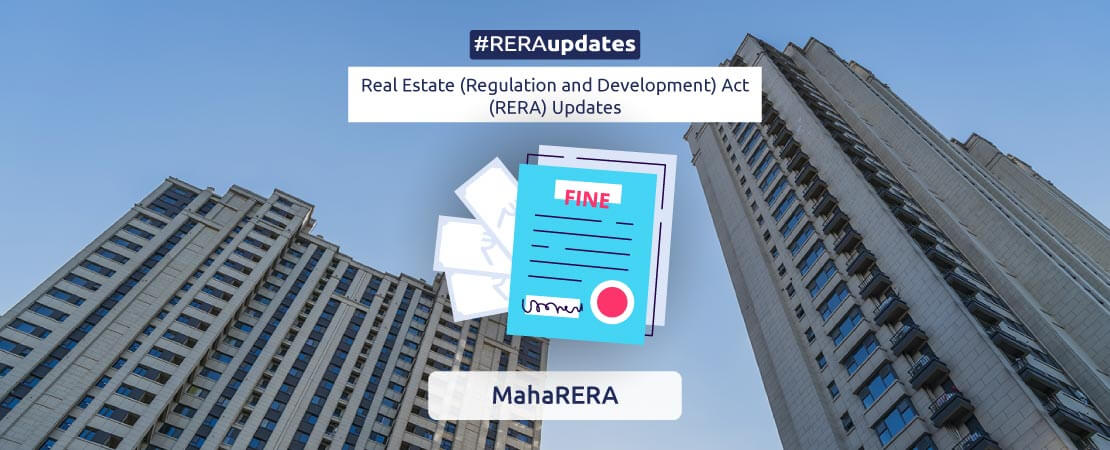
Unprecedented! In a first MahaRERA fines homebuyer for payment delay to builder
The Maharashtra Real Estate Regulatory Authority (MahaRERA) in an unprecedented case, has asked a homebuyer to pay penalty in the form of interest to the developer for delay in payment. This is contrast to usual directives from the authority to developers to pay penalty for delayed possession to a homebuyer.
According to a report in the Economic Times, SMP Namrata Associates, a developer, complaint against a home buyer for not making payment despite several demand letters.
The homebuyer had entered into an agreement with the developer to buy an under-construction apartment in Pune and the same was registered in August 2019. According to the builder’s complaint, the homebuyer had not made any payment despite several demand letters between August and December 2019.
The homebuyer then in January 2020 sent a legal notice to the builder for non-allotment of car parking space. This, along with an increase in GST charges, was cited by the homebuyer as reasons for not making payment to the developer, the business daily mentioned.
The developer then approached MahaRERA to seek its directions for cancellation of the agreement and forfeiture of the amount paid by the buyer at the time of booking.
The homebuyer had claimed that the complainant being a promoter cannot file a complaint against the allottee as there is no provision under RERA to file such complaint.
MahaRERA member, Vijay Satbir Singh opined that that the buyer being an allottee is liable to make payments in accordance with the terms and condition of the sale agreement, the publication mentioned.
The authority is of the view that in case of any default on the part of allottee or the promoter, either party would be entitled to seek interest for such a default as prescribed by the Real Estate (Regulation & Development) Act, 2016.

8 Essential Things every new Homeowner needs to know
1. Finding the main water control valve
2. Know the Electrical supply
3. Get to know your appliances
4. Take Advice before interiors or remodeling
5. Ensure General Fire Safety
6. Learn How to Identify Potential Issues in Your New Home
7. Know the Surrounding Essentials
8. Talk to the Neighbours
Buying a house is considered one of the most significant investments you will make in your lifetime and there is so much to think about – the move itself, changing billing addresses, unpacking and even getting used to the sounds that your new home makes.
After months of house hunting, you finally find the home that satisfies your needs. So you feel relaxed and stress-free in your new home. Once you buy a new place to live in, there are several things you need to know about it.
No matter whether you have purchased a new home or got the property in the resale, there are certain things that you need to take care of when you first enter your new home.
Just like learning to drive a car or cook food, every home has important things that the homeowner must be aware of and learn how to operate. For those who believe in absolute home comfort, here is a list of 8 essential things you must know related to your new home.
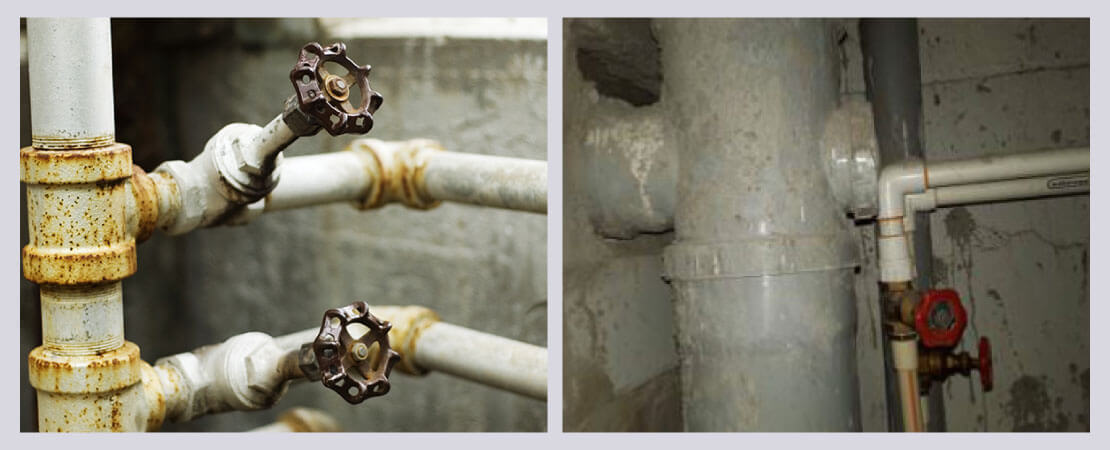
1. Finding the main water control valve
Water from a broken plumbing pipe can pour out dozens of gallons into your home’s interior in a matter of minutes, soaking everything in sight – including flooring, furniture and valuables. In this situation or others like (leak or drip), turning off the water mains can prevent the water from causing serious damage to other areas of your home. Water damage is one of the most common occurrence.
Nowadays, many homes have separate water control valves for each area (kitchen, bathroom), which is ideally better. And some homes have the main water control valve at terrace near storage tank. It is important to know the location of this main valve in case of any emergency. Make sure everyone knows where it is located and how to close the valve. Also always ensure it moves freely instead of hard to operate.
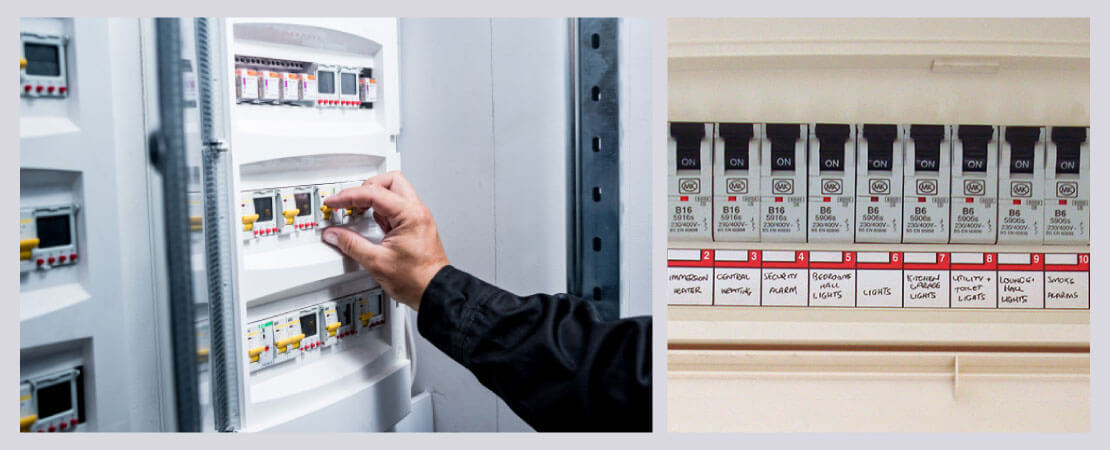
2. Know the Electrical supply
Familiarize yourself with electrical supply including the position of the Distribution Board (DB) in case of a trip while plugging in your systems for the first time. There are two common situations that will require you accessing your electrical panel: An outlet in your home has been overloaded and blown a circuit that you need to reset to restore power or, need to turn off the power of a certain area for some electrical work like installing an outlet, or light fixture. If possible label your Distribution board or panel, in case you or any other person requires to turn off the power for some task.

3. Get to know your appliances
Home appliances have made our lives so much easier. We cannot deny the comfort and convenience these appliances provide us. A day without these helping hands is quite annoying and troublesome. Just like cars and televisions, the appliances in your home have different life expectancies and a proper way to operate. It is important to know your appliances, as good care and correct use of these appliances will provide them a longer running life. It is always better to read the guide before using it. Also, keep the warranty card, service details and guide of all appliances together in a place.
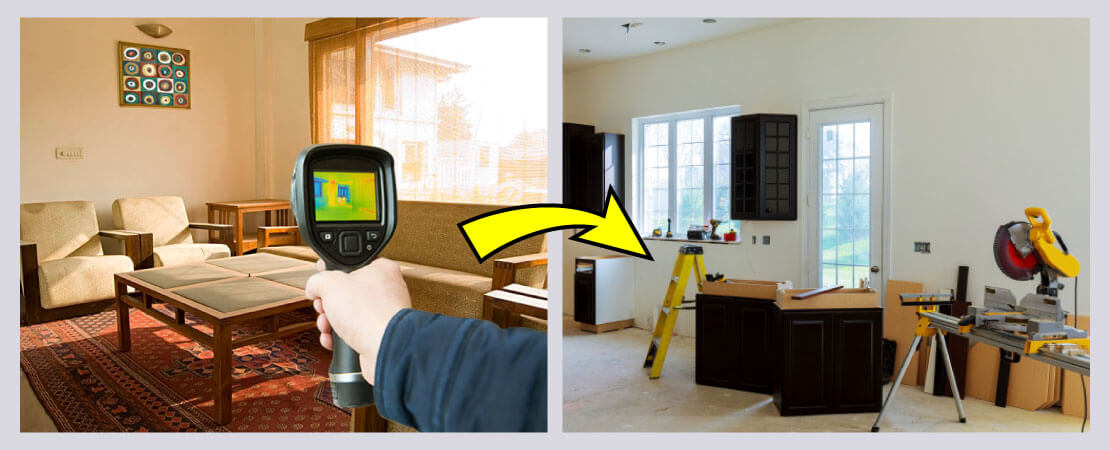
4. Take Advice before Interiors or Remodeling
After buying a home, usually a homeowner plans to have interiors or remodelling. Home Remodelling is a big project, you should not take it lightly in order to maintain aesthetics, functional ease and of course to make your money spent worthwhile. Opting remodeling or furnishings without proper advice can lead to rework and waste of money, if there is any concealed leakage or other related issues in your home. So,it is important to know and understand the condition of your home first with help of professionals before furnishing or remodeling.
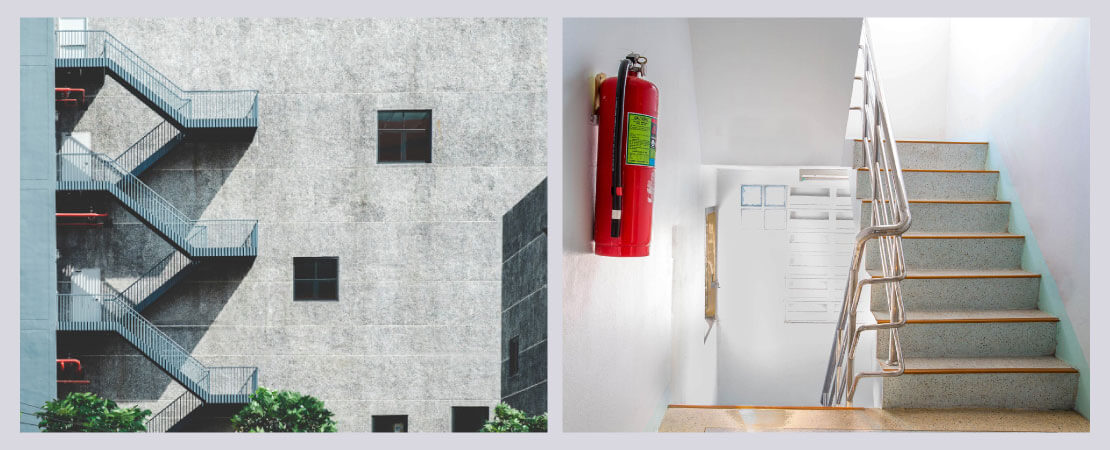
5. Ensure General Fire Safety
Fires at home are generally due to electrical shortcircuit or smoking or overheating. It is important for the homeowner to ensure the general fire safety at home. Firstly, in order to keep yourself safe, see how is the emergency exit in your building in case of an apartment. You should know the location of all of your home’s safety equipment in case of emergencies. Locate and check the availability of fire extinguishers and fire alarms. Obtain and maintain it, in case it is not present. You can also read Fire and safety regulations1.
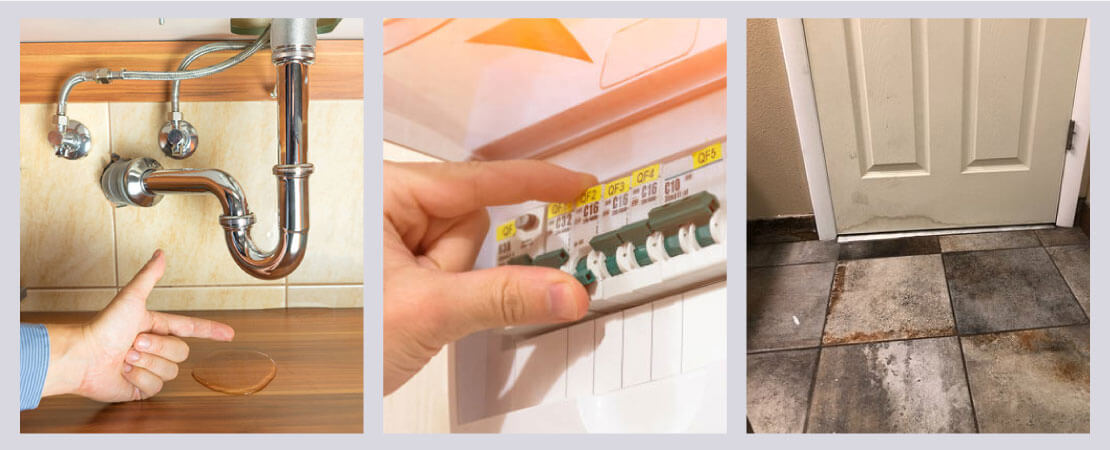
6. Learn How to Identify Potential Issues in Your New Home
One of the best homeowner maintenance tips is to detect minor problems before they become huge issues. After purchasing your home, take some time to learn about some of the common issues homes face. Being able to identify a potential problem early on could save you money later. There are certain common problems that you need to take care of when you first enter your new home:
- Plumbing Issue: The plumbing issue is most common for new homeowners. When you start living at the new place you need to see for any plumbing issue in the home. Visual checks can be done like leakage in the visible portion of pipes or watermarks seeping through the ceiling or walls; improper installation of fitting, and grout problems.
- Check electrical system: Another important factor new homeowners should consider is the electrical circuits. You do not need to open the circuit board to find the issue. Check if you are facing some tripping problem in DB while using any appliance or there is any layout problem like the improper position of socket. You can also observe the outer layer of the system to see if there is any burning issue or damage to the wires system. If you require, hire a skilled electrician to check each and every wire connected to the home. The electrician will examine the system closely to see if any repair requires in the system.
- Check the floor: The floor damage is common in a home. You should check for the damage tiles, hollowness in tiles, the gap at tile joints etc to avoid the water leakage or any other circumstances where your floor started losing its strength.
Apart from this, there are other basic elements like wall, ceiling, door, window. There can be some problems in these basic elements even in your new home. To understand more, read Moving to a New Apartment? Home inspection can be a saviour. If you want the help of experts in detecting the probable defects of your apartment, Contact professional home inspection services.

7. Know the surrounding essentials
Homeowners should determine where the nearest shops/retail facilities are, and their earliest opening and closing times to ensure that they can buy what they need. Also know about essentials like Hospitals, gas service center, public transport etc.

8. Talk to the Neighbours
You might feel shy but getting to know your neighbours will be useful for you in the long run. You can look out for each other, notify each other of problems or issues in the neighborhood, and you will have someone that you trust to water your plants or feed your pet while you are away.
Apart from the above points Homeowners should determine the integrity of the physical security such as door locks and in case of the individual house, check the gate at the perimeter of house.
Bottom Line
Buying a new home is exciting as we have many plans in our mind to make it look more beautiful. But before focusing on the way to make it look better, there are certain things that you should be sure to familiarize yourself with when it comes to your new home. Being sure to know the basics related to some simple things mentioned above can benefit you in the long-run! Our objective was to make you aware of important things that every new homeowner needs to know to ensure your home running smoothly.

8 Easy habits to keep your home clean and clutter-free
1. Maintain No-shoe Rule
2. Put things back after use
3. Wipe your Counters & tables after each meal
4. Wash the dishes and clean your sink
5. Empty & clean Dustbin regularly
6. Prepare a Weekly & Monthly Cleaning routine
7. Make a Morning routine
8. Finish the Night with your Evening Routine
When life gets busy, keeping a clean home can fall by the wayside. When your home is dirty or cluttered, it is difficult to focus on the tasks you should be doing.
Also, Medical professionals and organizers believe that a cluttered home is not just an aesthetic problem1, it can lead to very real health issues. Cleaning and de-cluttering your home enhance happy & healthy living.
We all like living in clean and clutter-free houses. Being a wife, mom, homemaker and also if you are a working woman, there are many tasks and responsibilities that you are accountable for. Between work, parenthood and everyday life chaos, keeping your house clean & clutter-free can be one of the toughest things for many of us.
So, today, we are sharing some easy routines and habits to help you maintain a clean & clutter-free home now and in the future.

1. Maintain No-shoe Rule
If you want to avoid bringing in mud and dirt from the outside, then one of the important habits is to make and maintain a no-shoe rule at home. We assume most of you already follow this habit but still we included this for those who do not know its important point in keeping your home clean. Keep a shoe rack at the entrance of the home. If you are a person who finds its difficult walking barefoot then always keep a separate clean slipper only for inside home usage (avoid using that in bathrooms).

2. Put things back after use
It is so much easier to pick things up as you go but many of us do not bother to keep things back at their place after usage. This is one of the reason which creates a disorganized and untidy home. The key to making this work, of course, is to ensure that everything has its own place. Do that first if you have not already.
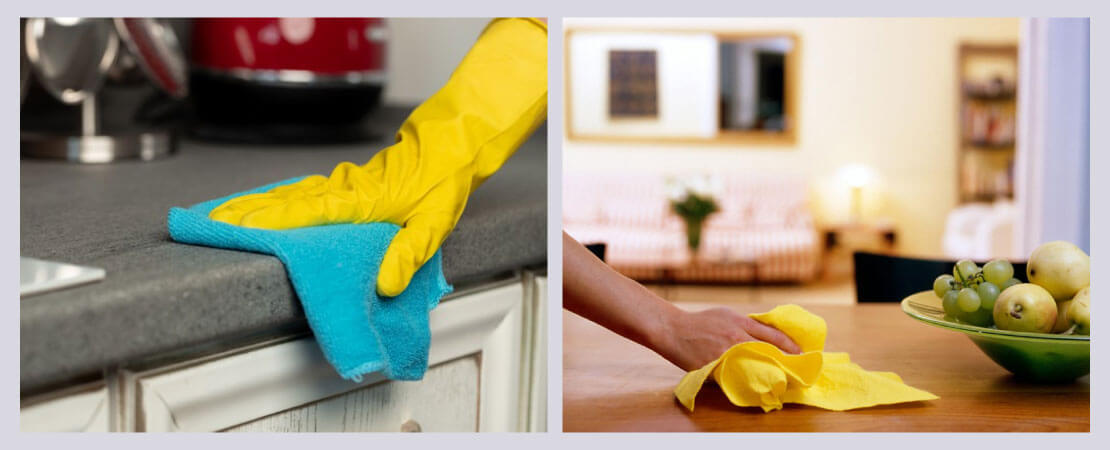
3. Wipe your Counters & tables after each meal
After you eat your meal, apart from putting away the dishes and cutleries & washing them, you should remember to wipe down the tables and counters2.
The simple act of wiping down your counters and table will get you in the habit of keeping these surfaces clear of clutter and clean of dirt & germs. Surfaces should be free and clear to prepare and eat on – just doing this one thing will help you feel tidier and lighter all around. You should also disinfect your counters and tables every once in a while.
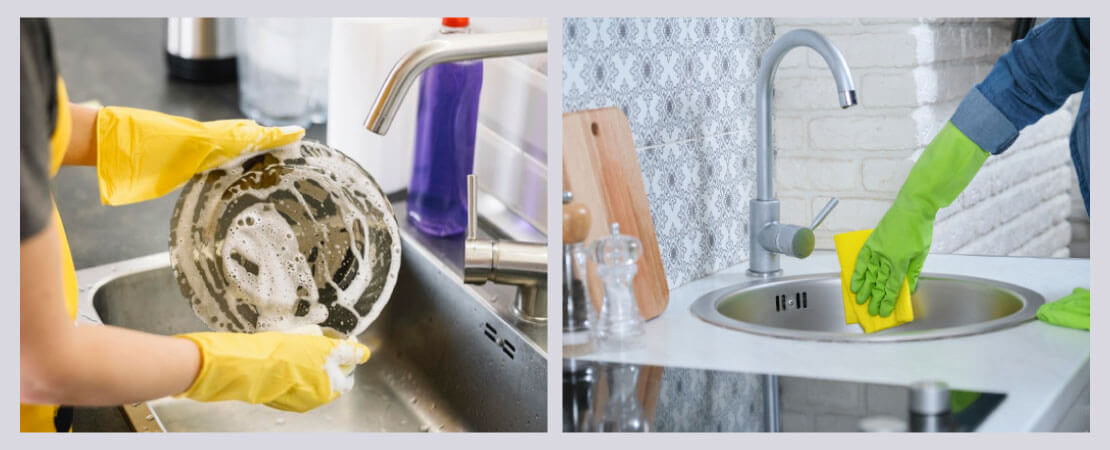
4. Wash the dishes and Clean your sink
Try and avoid getting into the habit of leaving your dishes to be washed for the next day. It is not a nice way to wake up if you have to deal with washing the dishes that you left overnight. We will also suggest keeping utensils inside the cabinet when it is dry to avoid the damage to the cabinet and growth of germs. So, wash the dishes every night, and put them away in morning.
Also, your kitchen sink is the place where you wash your dishes and clean up messes. But how often do you clean your kitchen sink? Wash kitchen sinks regularly as research shows they actually have more germs than the toilet3. Sinks4 and hidden sections of the kitchen wardrobe must be cleaned regularly with antibacterial wipes or other related products.
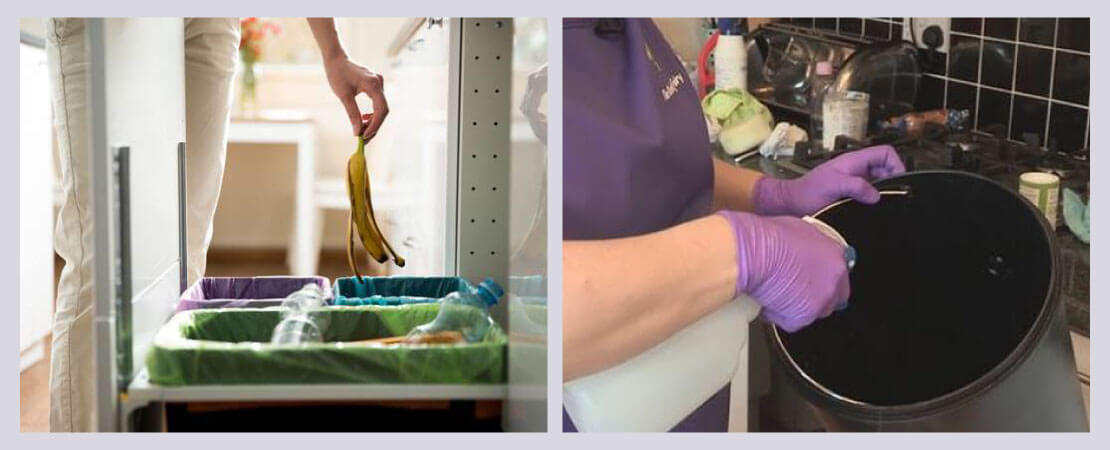
5. Empty & Clean Dustbin
A dustbin is the dirtiest place in the house, and it is likely to attract various pests like cockroaches and houseflies that lead to different infections and diseases. To keep them at bay, empty and clean your dustbin on a regular basis.
Washing the bin with hot water and a liquid cleaner once a week will minimize the smell. Also, coordinate with a garbage collector to pick your garbage daily to avoid the piling of waste at home.
Always maintain a separate dustbin in the kitchen for wet waste and another in living room or balcony for dry waste.
Disposing of garbage is a daily chore, just like any other job in your life. This habit helps you keep your home clean, healthy, hygienic and smell-free.

6. Prepare a Weekly & Monthly Cleaning routine
Make a cleaning routine and divide the task you will do on a weekly and monthly basis. If you follow a proper cleaning routine and do not wait for Diwali to clean your house, you will never have the need to deep clean. This is also useful for those, who have house helps. According to this routine, they can instruct and get the work done. For example: For weekly schedule – do dusting, organize one room in each week, give more care to bathrooms and kitchen, cabinets etc and for monthly schedule – check all appliances, furniture, wash rugs, wipe down walls etc. This cleaning routine can be prepared depending on an individual’s time availability. To understand more through some cleaning routine examples, click here5.

7. Make your Morning routine
Our morning routine is so important to get our day off on the right track. It not only gives a jumpstart on a few daily tasks we have to do in our home, but it also makes feel like accomplished something right away.
Morning routine can differ for a homemaker and working woman in terms of devoting time. You should include making your bed, start a load of laundry in the washing machine, wipe down the bathroom counters, kitchen counters, quick pickup of our living space, sweep & mop the floor etc. A working woman can transfer some tasks in the evening. To get better understanding, you can read about successful morning routine6.
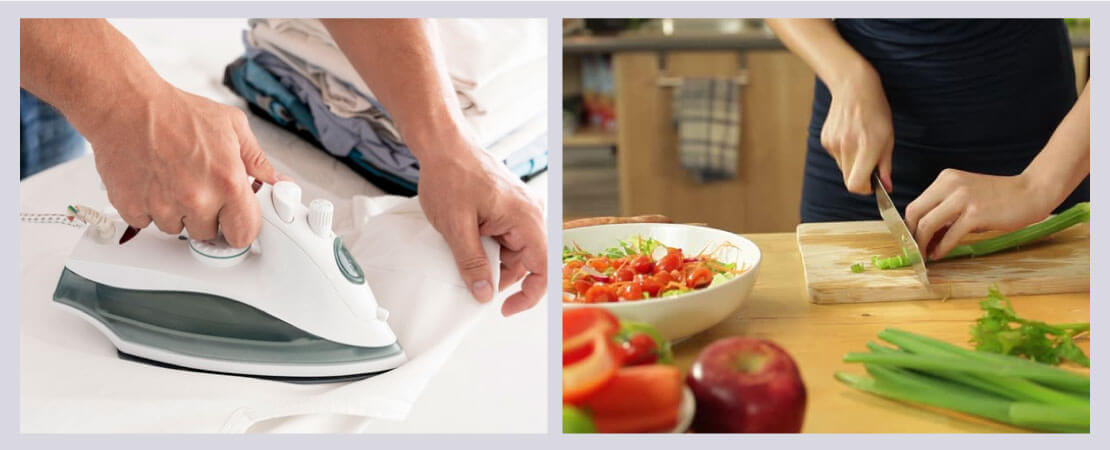
8. Finish the Night with your Evening Routine
Just like your morning routine is the perfect way to start your day, your evening routine will help you set yourself up for success the next day. These include preparing dinner, cleaning utensils of dinner, folding and ironing the clothes, doing some basic food preparation for tomorrow (generally if you are a working woman).
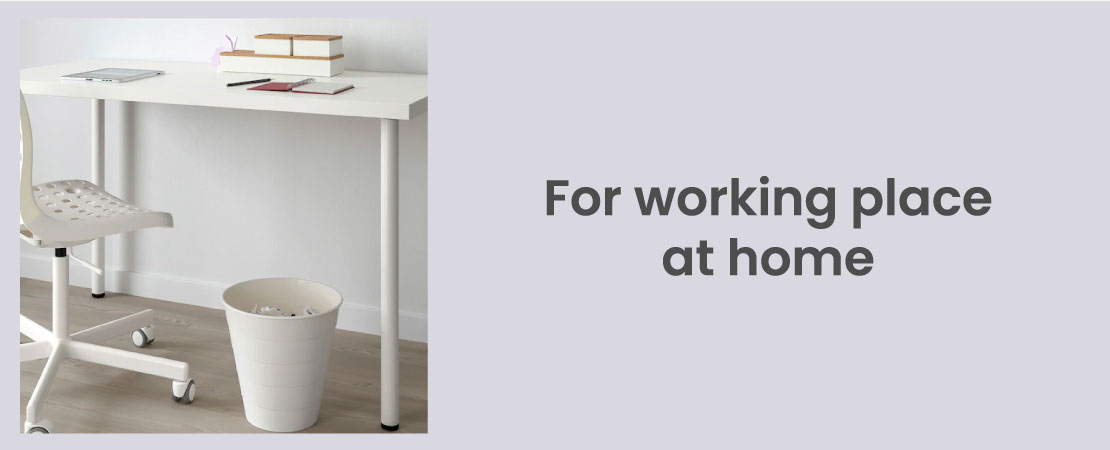
Other Important Point for those who have a working place at home: A clean workspace will not just ensure that you stay healthy, but it can also boost your productivity. If you are working from home or have a home office, read How to Clean Your Home Office7.
Conclusion
The habits listed above should help you keep your house clean, clutter-free and maintain it. The great thing about having daily cleaning habits is that the longer you do it, the less you have to clean. This is the reason why you should start your cleaning habits today since the sooner you do it, the sooner you will see the results.
The ideal cleaning routine will vary from person to person – what works for one, may not necessarily work for another. Your needs will change depending on the size of your home, the age of your children, your work schedule outside of the home, etc. There are, however, a few basics that we all must get done daily and others can be done on a weekly, monthly duration.
Reference links used:
1. https://www.popsugar.com/smart-living/How-Cleaning-Can-Improve-Your-Health-37956421
2. https://creativehomekeeper.com/kitchen-counter-organization/
3. https://sanitizeyourplace.in/cleaning-sanitization-and-disinfection-csd-trivias/
4. https://sanitizeyourplace.in/kitchen-safety-and-sanitization-a-must-for-all-times/
5. https://joyfullygrowingblog.com/how-to-keep-your-house-clean-clutter-free/
6. https://www.thesimplyorganizedhome.com/morning-routine/
7. https://www.maids.com/cleaning-hacks/clean-home-office/
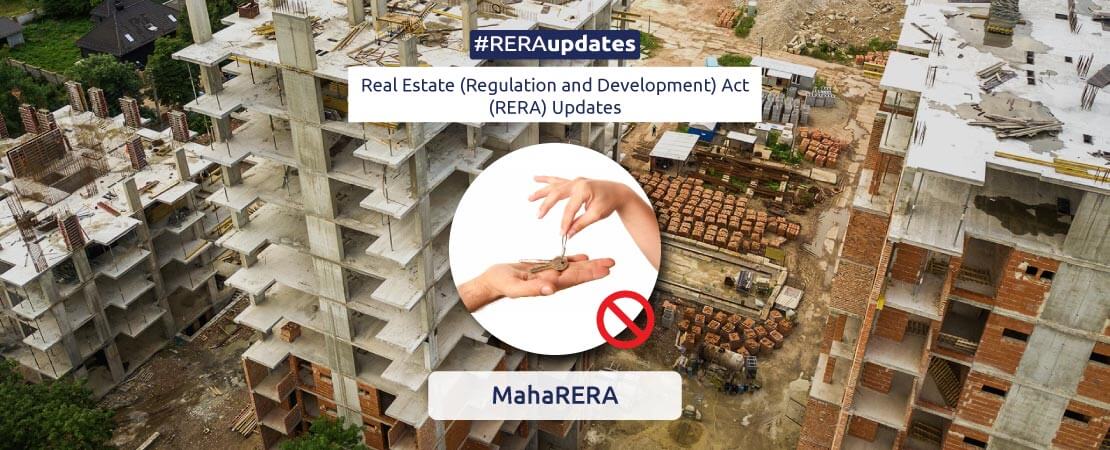
Bombay HC directs developer to pay Rs 5 cr for delay in property hand over
Mumbai
The Bombay High Court has directed real estate developer Renaissance Infrastructure to pay Rs 5.04 crore as compensation to a person who had not been handed over his property in Mumbai even after a delay over 80 months. A single bench of Justice S C Gupte on September 25 upheld the orders of the Maharashtra Real Estate Regulatory Authority and the RERA Appellate Tribunal that had ordered for the compensation amount to be paid to the purchaser.
The developer had approached the HC, challenging orders of RERA and the RERA Appellate Tribunal passed in January this year. As per the HC order, the purchaser bought six plots of land and some warehousing buildings from the developer in December 2009.
According to the sale agreement, the warehousing buildings and plots were to be handed over to the purchaser by March 9, 2010. The agreement also said that if the developer failed to hand over the properties on time, he would be liable to pay the purchaser a compensation amount at the rate of Rs 10 per sq ft per month.
When the developer failed to hand over the property, the purchaser approached the RERA that calculated the compensation amount as Rs 5.04 crore. The Renaissance Infrastructure challenged this order before the appellate tribunal, which asked the developer to deposit 50 percent of the compensation amount as per the RERA Act for entertaining the appeal.
But, when the developer failed to pay the pre-deposit, the appellate tribunal dismissed the appeal. The developer then filed a second appeal in the HC.
In his order, Justice Gupte dismissed the second appeal after holding that there were no infirmities in the orders passed by the RERA and the appellate tribunal. He held that the orders do not give rise to ”any substantial question of law for the consideration of the High Court”.
Justice Gupte said the Renaissance Infrastructure was liable to hand over the property as agreed to. ”Under this agreement, termed as an agreement for sale, the appellant (Renaissance) was bound to hand over possession of the suit premises to the respondent within an agreed period,” the high court said.
It directed the developer to pay Rs 5.04 crore to the purchaser within four weeks.
